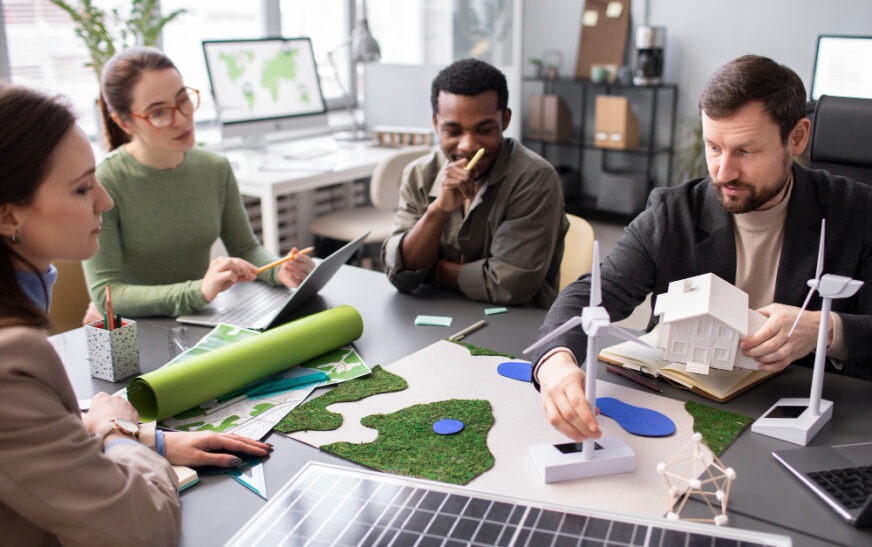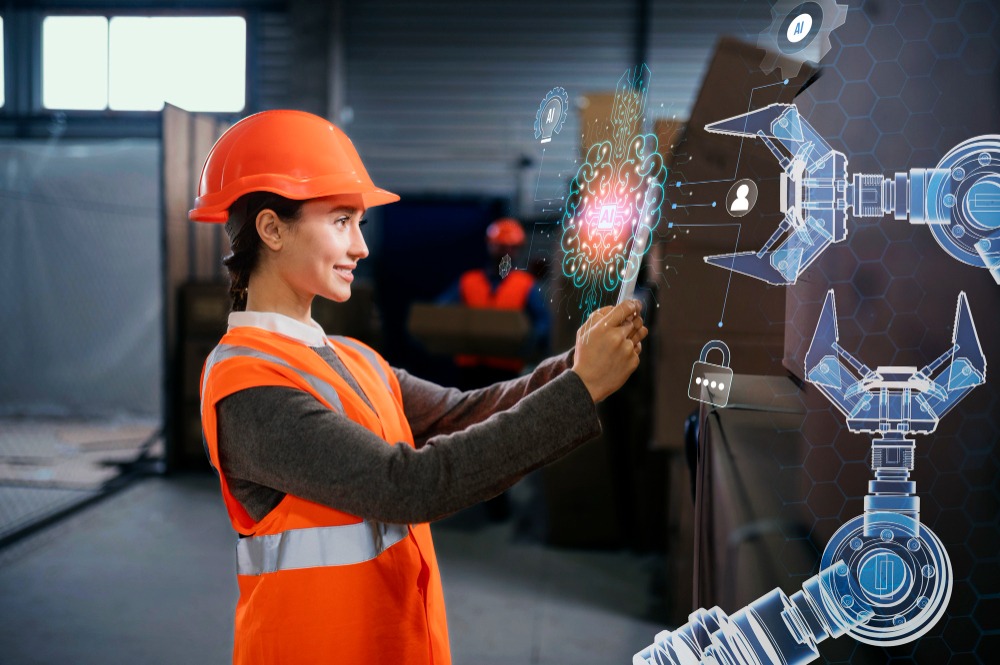Introduction
As we inch closer to 2024, the urgency for adopting sustainable practices and green technologies has never been more apparent. The growing environmental concerns, such as climate change, plastic pollution, and loss of biodiversity, have propelled scientists, entrepreneurs, and innovators worldwide into action. This wave of innovation is not only about minimizing the negative impact on the planet but also about creating a future where economic growth and environmental sustainability go hand in hand. In this regard, various eco-friendly innovations are emerging across the globe, offering hope and promising a greener, more sustainable future. From advancements in sustainable energy solutions to revolutionary recycling methods, these innovations are setting the stage for significant environmental recovery and conservation efforts. This blog explores eight such groundbreaking eco-friendly innovations making strides towards a greener future in 2024. Each innovation not only represents a step forward in reducing our environmental footprint but also highlights the incredible potential of human ingenuity in solving the planet’s most pressing problems.
Advancements in Renewable Energy
Renewable energy stands at the forefront of eco-friendly innovations, charting the path toward a more sustainable and cleaner future. As we advance into 2024, the progress in renewable energy technologies, particularly in solar and wind sectors, not only promises to significantly reduce our carbon footprint but also transforms the way we generate, consume, and think about energy.
Solar power innovations
Solar power, a leading source of renewable energy, has witnessed a surge in innovations aimed at making it more efficient, affordable, and accessible. Recent advances include the development of perovskite solar cells, which offer a cheaper alternative to the traditional silicon cells while achieving similar or even higher efficiency rates. These novel cells are not only less expensive to produce but also flexible, opening up new avenues for integrating solar power into everyday objects like windows, vehicles, and wearable technology.
Another groundbreaking innovation is the enhancement of solar panels’ efficiency through the use of bifacial technology, which allows panels to capture sunlight from both sides, significantly increasing their energy output. Moreover, floating solar farms have emerged as a solution to land usage concerns, harnessing unused aquatic surfaces to generate power without occupying valuable terrestrial space.
Wind energy developments
Wind energy, another pillar of renewable power, is experiencing its own set of groundbreaking advancements. The shift towards larger and more efficient turbine designs is one notable trend, enabling a single turbine to generate significantly more power than older models. This increase in size and efficiency not only makes wind farms more productive but also reduces the number of turbines needed, minimizing their environmental and visual impact.
Furthermore, the introduction of floating wind turbines has opened up new possibilities for offshore wind farms. These turbines are anchored in deep waters where wind speeds are higher and more consistent, thereby harnessing stronger winds and generating more power than their land-based or near-shore counterparts. This advancement not only expands the potential locations for wind farms but also reduces conflict over land use and proximity to residential areas.
Sustainable Transportation Solutions
Transportation is a major contributor to global carbon emissions, making the shift towards more sustainable modes of transport critical in our effort to combat climate change. Innovations in electric vehicles (EVs) and improvements in public transportation are leading the charge in creating a more sustainable and efficient transportation ecosystem.
Electric vehicles
Electric vehicles are at the heart of the transition to sustainable transportation. The year 2024 marks significant advancements in EV technology, including improvements in battery life and charging infrastructure. New battery technologies not only extend the range of EVs, alleviating range anxiety but also reduce charging times, making EVs more practical for daily use.
Manufacturers are also focusing on making EVs more accessible through reduced costs and a wider variety of models, catering to different needs and preferences. Additionally, the expansion of charging infrastructure, including the deployment of fast-charging stations and the integration of charging facilities in residential and commercial buildings, is making EVs a more convenient option for a broader segment of the population.
Public transportation improvements
Public transportation systems around the globe are undergoing transformative improvements that prioritize sustainability and efficiency. These include the electrification of buses and trains, reducing greenhouse gas emissions, and improving air quality in urban areas. Moreover, the adoption of smart technology in public transportation systems, such as real-time tracking and mobile payment options, enhances the user experience by making these services more reliable, accessible, and convenient.
Cities are also exploring innovative solutions like dedicated bus lanes and bike-sharing programs to encourage the use of public transportation and non-motorized transport options, further contributing to the reduction of traffic congestion and environmental impact. These enhancements not only make public transportation a more attractive option but also play a critical role in the shift towards a more eco-friendly and sustainably mobile society.
Innovative Recycling Methods
In the quest for a greener future, recycling methods have taken an innovative turn. Traditional recycling methods are evolving, and new technologies are emerging to tackle the growing issue of waste, particularly in plastics and electronics. These advancements not only aim to reduce the environmental impact of waste but also strive to transform recycling into a more efficient, profitable, and sustainable part of the circular economy.
Plastic Recycling Breakthroughs
Plastic waste has been a persistent environmental challenge due to its non-biodegradable nature and the sheer volume produced annually. Recent breakthroughs in plastic recycling are promising significant strides toward mitigating this issue. One innovative approach includes chemical recycling, where plastics are broken down to their molecular level, allowing them to be reconstructed into new, high-quality plastics. This method stands in contrast to traditional mechanical recycling, which often results in lower-quality plastic.
Another emerging technology focuses on enzyme-based recycling. Scientists have developed specific enzymes capable of digesting certain types of plastic into their fundamental components. These components can then be reused to produce new plastics, offering a potentially endless recycling loop. Such breakthroughs indicate a shift towards more sustainable and efficient methods of managing plastic waste, offering hope for substantial reductions in plastic pollution.
E-Waste Management Innovations
Electronic waste, or e-waste, has become one of the fastest-growing waste streams globally, fueled by the rapid pace of technological advancement and the subsequent obsolescence of electronic devices. Innovations in e-waste management are crucial in addressing this challenge. One notable innovation is the development of more efficient methods for extracting valuable materials, such as precious metals, from discarded electronics. Advanced separation techniques, combined with safer and more environmentally friendly chemical treatments, are increasing the recovery rates of these valuable materials.
Furthermore, increased automation in e-waste recycling processes is enhancing efficiency and safety, reducing the reliance on manual labor, which can be hazardous given the toxic materials often found in electronic waste. There’s also a growing emphasis on the design phase of electronics, with manufacturers being encouraged to consider the end-of-life recyclability of their products. Such innovations are paving the way for a more sustainable approach to managing e-waste, emphasizing resource recovery and reduction of environmental harm.
Eco-Friendly Products
The development and adoption of eco-friendly products represent a fundamental shift toward sustainability. Manufacturers across various sectors are increasingly prioritizing the environmental impact of their products, resulting in innovations that range from sustainable packaging solutions to biodegradable materials. These sustainable alternatives not only help reduce waste and conserve resources but also meet the growing consumer demand for green products.
Sustainable Packaging Solutions
Packaging plays a significant role in the environmental footprint of many products, and sustainable packaging solutions are rapidly evolving to reduce this impact. Innovations include the use of biodegradable materials, such as plant-based plastics, which can decompose naturally, significantly reducing pollution. Additionally, there is a growing trend toward the use of recycled materials in packaging, further contributing to the reduction of waste.
Another promising development is the design of reusable packaging systems, where consumers can return packaging for reuse. This model not only minimizes waste but also promotes a shift in consumer behavior towards more sustainable practices. Such innovations in packaging are critical in the journey towards a more sustainable future, minimizing the environmental impact of consumer products.
Biodegradable Materials
The shift towards biodegradable materials is a key trend in the production of eco-friendly products. These materials, derived from natural sources such as plants, are designed to break down quickly and safely when disposed of, minimizing their environmental impact. Innovations in this area include the development of biodegradable plastics, fabrics, and even biodegradable electronic components.
One exciting development is the creation of biodegradable films and coatings that can replace conventional plastics in a variety of applications, from packaging to agricultural films. Additionally, research into biodegradable materials for fashion and textiles is offering sustainable alternatives to synthetic fibers, which are a significant source of microplastic pollution. These materials not only represent a step towards reducing waste and pollution but also offer new possibilities for recycling and composting, contributing to the overall sustainability of products and industries.
Conclusion: Embracing a Greener Future
The drive towards a more sustainable and eco-friendly future is not just an imperative for environmental preservation but also a testament to human ingenuity and resilience. The eight eco-friendly innovations highlighted above showcase the diverse ways in which technology, when harmonized with sustainable practices, can lead us towards a greener, more sustainable future. From biodegradable materials replacing conventional plastics to advanced renewable energy solutions and innovative recycling methods, each innovation represents a step forward in our collective journey towards environmental stewardship.
As individuals, communities, and industries adopt these eco-friendly innovations, we contribute to a larger movement that prioritizes the planet’s health over short-term gains. By supporting and integrating these green technologies and products into our daily lives, we not only reduce our environmental impact but also inspire further innovation in sustainability.
The path to a greener future is paved with the choices we make today. Let us choose to support and invest in these eco-friendly innovations, for they hold the key to a sustainable, vibrant world for generations to come. Embracing a green future is not just about adopting new technologies; it’s about fostering a culture of sustainability that values the environment as much as progress. Together, we can make a difference, one innovation at a time.





















